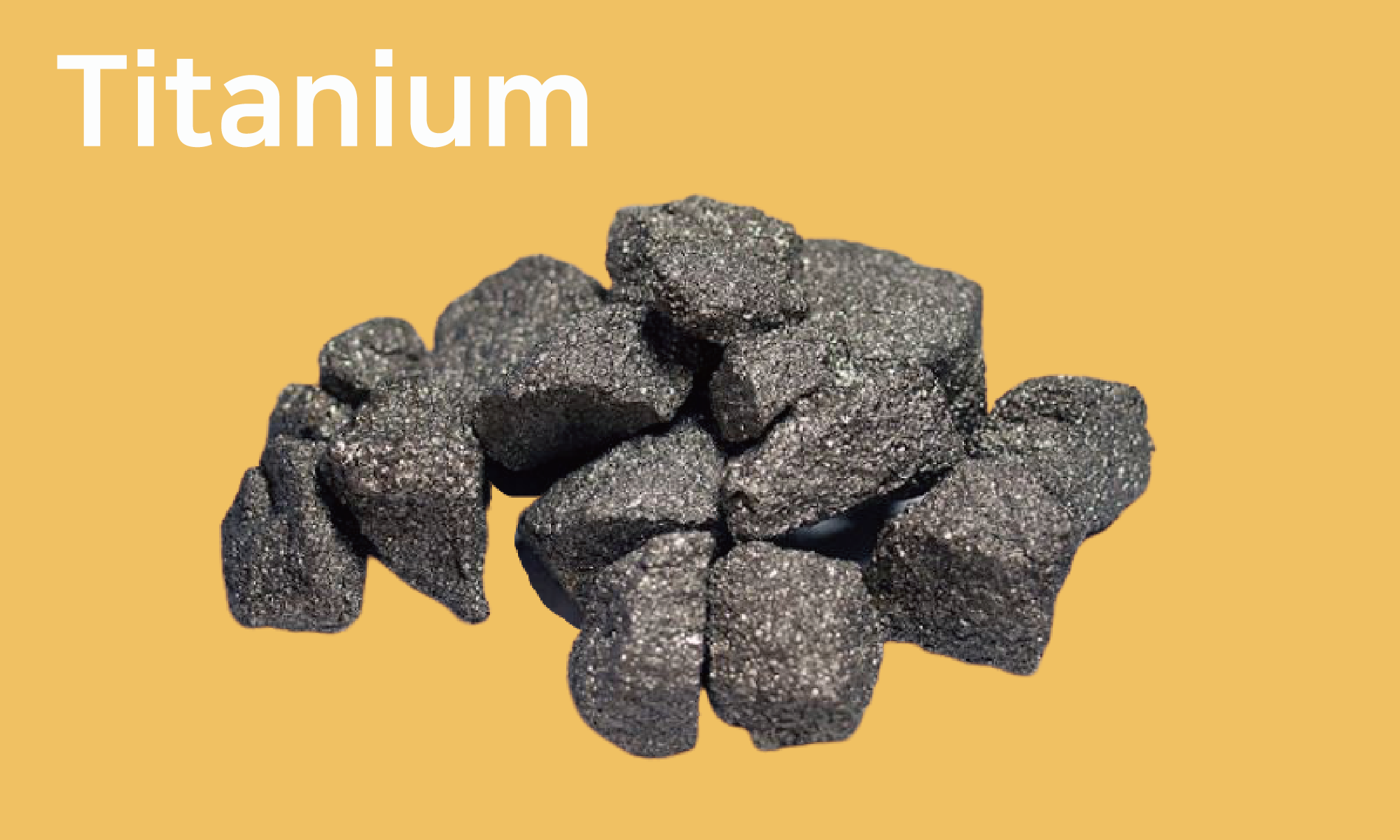Titanium / CAS 7440-32-6

Titanium was first discovered in 1791.
A British pastor first analyzed the black sand being pulled by magnets in a valley in the church. The analysis found that iron oxide and other unknown metals contained oxides, and in 1795, a German chemist discovered the same element in gold Hongseok and named it Titanium after Titan, a god in Greek mythology. But neither of them succeeded in reducing the oxide, so they failed to walk the mono-element metal titanium, and in 1910, Hunter of the United States got the first pure metal titanium, and in 1946, Krall, an engineer from Luxembourg, came up with the magnesium reduction method.
As a result, titanium has been commercialized as an industrial metal material and used for special purposes such as submarine hulls and aircraft fuselages, but today it is being used for a variety of purposes ranging from decorative to household goods.
Titanium is a light yet strong metal element that is the ninth most contained element in the Earth’s crust, the fourth largest among metals and the largest in sand made of igneous rocks. It’s four times stronger than aluminum, but it’s only about 1.7 times heavier. It is also easy to train and process.
In addition, the film on the surface has become a star of light metals along with aluminum because it is not corroded well because it protects the inside.
Usage of titanium
Titanium oxide, a compound of titanium oxide, has a photocatalytic effect that decomposes contaminants when light touches, is highly hydrophilic and well integrated with water.
Also, coating glass or building with titanium oxide makes it easier to break down and wipe off pollutants, and prevents frost by dropping water droplets from the surface.

In addition, it is used in cosmetics such as white pigment and sunscreen such as foundation and BB cream, and it gives off a bright white glow of fireworks, and it is used as a material for our daily consumption such as tennis rackets, watch straps, eyeglass frames, frying pans, etc.


